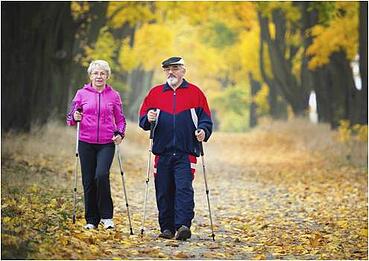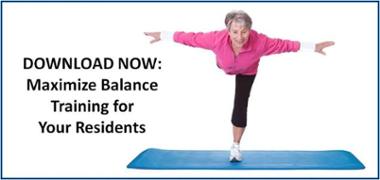 Over the years, it is easy to forget about exercise when it’s not routine. Remaining sedentary over life can lead to metabolic disorders and other diseases associated with physical inactivity. A recent study suggested that about 67 percent of the older population is sedentary for at least 8.5 hours each day, suggesting a need to improve activity levels for senior health.
Over the years, it is easy to forget about exercise when it’s not routine. Remaining sedentary over life can lead to metabolic disorders and other diseases associated with physical inactivity. A recent study suggested that about 67 percent of the older population is sedentary for at least 8.5 hours each day, suggesting a need to improve activity levels for senior health.
Exercise for elderly people should be something performed regularly, and making it fun and a routine can help in the long term. Moreover, there are numerous health benefits the older adult can receive from long-term exercise. Following are 10 reasons seniors should continue to exercise.
- Arthritis: Exercise is one of the most crucial options for arthritis management. Regular activity helps lubricate the joints and can help reduce overall pain and stiffness that is often present among individuals with arthritis. Moreover, obesity is a risk factor for the disease, and increasing physical activity levels can help better manage the debilitating symptoms of arthritis. (Here’s another NIFS blog post about exercise and arthritis.)
- Heart disease: Heart disease is one of the biggest causes of death in the United States. The Centers for Disease Control and Prevention state that about one in every four deaths is attributed to heart disease. More people exercising later in life can help reduce the number of individuals with heart disease through the management of blood pressure and blood glucose, and decreasing LDL cholesterol.
- Metabolic Dysfunction (type II diabetes and obesity): Type II diabetes and obesity are two closely related diseases in which the body is in metabolic dysfunction. Exercise can help maintain proper body weight and help regulate blood glucose and insulin levels to make the body more efficient.
- Cancer: Exercise has been shown to help improve overall cancer risk among a variety of different forms of cancer. Studies have shown a 30 to 40 percent reduction in breast cancer risk among women who perform moderate to regular exercise.
- Hypertension: Exercise can help lower systolic blood pressure significantly through moderate-intensity physical activity. Try breaking up exercise into three bouts throughout the day lasting for at least 10 minutes each to receive blood pressure–lowering effects.
- Depression: Exercise can have a beneficial effect on personal mood. Studies suggest that group exercise classes among older adults can help reduce symptoms of depression by 30 percent or more in exercising older adults. The modest improvement in depressive symptoms can help maintain an overall greater vitality later in life and help prevent negative feelings or thoughts that are common with aging.
- Dementia: Dementia is a disabling condition affecting many older adults. With a wide range of mental disorders categorized as dementia, there is a great need to understand how to prevent the condition. Exercise is one prevention strategy that can help slow the mental decline. A recent study showed a 37 percent reduced risk and a 66 percent reduction in risk of dementia when older adults performed moderate-intensity exercise, suggesting every adult ought to exercise to help lower the risk of mental decline and to help prevent mental disability later in life.
- Quality of life: Maintaining functional independence is something many older adults want. A regular exercise inclusive of strength and balance training can help accomplish this. Aim to be physically active for 30 minutes every day and to strength train at least two non-consecutive days per week.
- Insomnia: Certain medications and life events can prevent the body from proper sleep. Higher levels of physical activity can help exhaust the body enough to place it in a position for restful and lasting sleep. Avoid strenuous exercise two hours before bed to obtain these benefits, and aim to meet the daily activity recommendations.
- All-cause mortality: Exercise is known to reduce death from all causes. In fact, a recent study showed a 30 to 80 percent reduction in all-cause mortality when individuals exercised at an intensity level greater than 4 METS, suggesting that exercise can help delay premature death from various causes.

